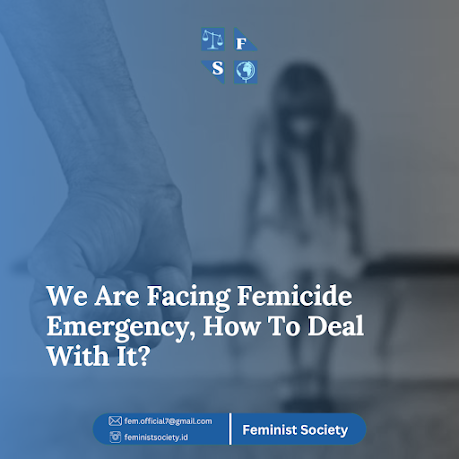Juneidi Coloay
Feminist Society – In the quest for gender equality, one aspect that often gets overlooked is the design and management of public facilities. A gender perspective in public facilities is not just about providing separate restrooms or changing rooms for different genders. It is about understanding and addressing the unique needs and experiences of all genders in the use of these facilities. Thereby, gender perspectives in public facilities come into play in supporting gender equality.
Understanding Gender
Perspective
A gender perspective involves
recognizing that men, women, and non-binary individuals may have different
needs and experiences when it comes to public facilities. This could be due to
biological differences, societal norms, or personal preferences. For instance,
women may require sanitary bins in restrooms, parents may need changing tables
for babies, and individuals with disabilities may need facilities that are
accessible and easy to use.
Why is it Important?
Incorporating a gender
perspective in public facilities is crucial for several reasons:
1.
Promotes Equality and Inclusion
By considering the unique needs
of all genders, we can ensure that everyone has equal access to and can equally
benefit from public facilities. If we take it into the Indonesian context, this
also means that we have been running equality before the law principle that is
enshrined in the 1945 Constitution of the Republic of Indonesia. This is a
fundamental aspect of social inclusion and gender equality.
2.
Enhances Safety and Comfort
Gender-sensitive facilities can
enhance the safety and comfort of users. When there are special public
facilities that are provided for specific purposes based on gender
considerations, it can make people feel secure and comfortable. For example,
well-lit and regularly maintained restrooms can help reduce the risk of
harassment or violence.
3.
Reflects Diversity and Respect
A gender perspective in public
facilities sends a powerful message that our society recognizes and respects
diversity. It shows that we care about the needs and experiences of all members
of our community.
In essence, according to the
aforementioned reasons, incorporating a gender perspective in the design and
management of public facilities is not just a matter of fairness or equality.
It’s about creating spaces that are safe, comfortable, and accessible for
everyone. As we continue to strive for gender equality, let’s not forget the
important role that our public facilities play in this endeavor.
Remember, equality is not just
about treating everyone the same; it’s about acknowledging our differences and
ensuring that these differences do not become barriers to access and
opportunity.
What Factors Should We
Consider to Encourage Gender Perspective in Public Spaces?
Encouraging public spaces to
adopt a gender perspective can be achieved through several strategies:
1.
Awareness and Education
The first step is to raise
awareness about the importance of a gender perspective in public facilities.
This could be done through campaigns, workshops, and seminars that highlight
the benefits of gender-sensitive design. This also could be done by utilizing a
digital platform to educate, advocate, socialize, and speak out loud regarding
the importance of gender perspective in public facilities. Moreover, in today’s
digital era, there are so many digital platforms that focus on gender equality
issues. Feminist Society is one of the examples.
2.
Policy and Legislation
Governments can play a crucial
role by implementing policies and regulations that mandate the consideration of
gender perspectives in the design and management of public facilities. In
Indonesia, the urban planning policies are relied on respective local
governments. However, the problem is that Indonesia is an archipelago state
where there are so many disparities among the cities. Therefore, we should
strive to create development balance in every city.
3.
Funding and Resources
Provide funding and resources for
the implementation of gender-sensitive designs in public facilities. This could
be in the form of grants, incentives, or technical assistance.
4.
Partnerships
Collaborate with NGOs, community
organizations, and private sector companies that are committed to promoting
gender equality. These partnerships can help amplify efforts and reach a wider
audience.
Remember, change often takes time
and persistence. But with concerted effort and commitment, we can create public
spaces that are inclusive, safe, and accessible for everyone.
If you are interested in issues
related to gender equality and in-depth discussion about feminism, let’s join
with Feminist Society. Feminist Society aims to promote progress in three key
aspects of gender equality and women’s rights activism: Law, Policy, and
Advocacy through the provision of digital-based information. To get related
articles, please visit the page feminist-society.blogspot.com.
You can also contact us on:
Instagram : @feministsociety.id
Email : fem.official7@gmail.com
View More:
Samuel Dubin., et al. Public
Restrooms in Neighborhoods and Public Spaces: a Qualitative Study of
Transgender and Nonbinary Adults in New York City. Sexuality Research and Social
Policy. Volume 18. Number 3. DOI: https://doi.org/10.1007/s13178-020-00504-3.
Miaojing Wei. Boundaries of
Transgender Access to Public Facilities in the United States. International
Journal of Frontiers in Sociology. Volume 5. Number 1. DOI: https://doi.org/10.25236/IJFS.2023.050113.
Michelle Amri. Equity and gender
mainstreaming in public policy: A scoping review protocol. PLOS One. Volume 19.
Number 2. DOI: https://doi.org/10.1371/journal.pone.0299124.
https://items.ssrc.org/just-environments/public-spaces-private-acts-toilets-and-gender-equality/
https://socialprotection-humanrights.org/framework/principles/gender-perspective/
.PNG)




